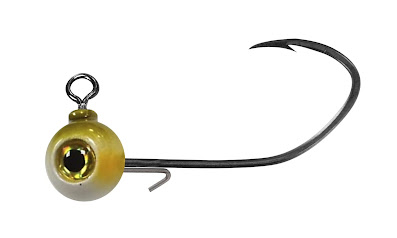When it comes to summer bass fishing, anglers are always on the lookout for effective techniques and lures. One lure that consistently proves its worth is the squarebill crankbait. Renowned for its ability to dive through shallow cover and provoke aggressive strikes, the squarebill crankbait is a go-to option for targeting bass during the warm summer months.
Here are several pointers on the art of fishing squarebill crankbaits that also reveal some great tips to help you maximize your success this summer:
Understanding Squarebill Crankbaits
Squarebill crankbaits are characterized by their square-shaped diving lip located right at the front of the lure. This design allows them to deflect off obstacles in the shallows (< 5’ deep), making them ideal for fishing in areas with submerged rocks, docks, timber, or weeds. The erratic wobbling action of the squarebill crankbait mimics an injured baitfish, triggering a bass's predatory instinct into striking.
Selecting the Right Rod, Reel & Line Combo
Before hitting the water, ensure you have the appropriate gear for squarebill crankbait fishing. A 6'6" to 7.25’ medium-heavy power, moderate-fast action casting rod with a low-profile, 6.8 gear ratios baitcasting reel is recommended though spinning gear can be used if preferred. The robust rod provides the strength needed to handle the fish and keep it away from obstacles in the water. Match the rod with a high-quality fluorocarbon line in the 12-20 pound test range, offering good sensitivity and abrasion resistance.
Choosing the Right Squarebill Crankbait
Squarebill crankbaits come in various sizes, colors, and associated diving depths. For summer fishing when bass are often targeting smaller forage, opt for smaller sizes with diving depths ranging from 2 to 5 feet. Natural colors such as shad, crawfish, or bluegill patterns are often effective in clear water and use brighter colors like chartreuse in murkier water or low-light conditions.
Scouting the Fishing Spots
During the summer, bass tend to retreat to the shaded areas of heavier cover in the shallows. Look for weed lines, submerged rocks, fallen trees, or docks close to drop-offs, points or creek channels. These spots provide ideal ambush points for bass to target prey, making them prime locations to work with your squarebill crankbait.
Retrieval Techniques
The key to success with squarebill crankbaits often lies in the way it’s retrieved. Start by casting your lure near the target area, letting it sit for a moment after it touches the water, and then start reeling it in with a steady retrieve through the cover. The squarebill's design imparts its erratic wobbling action during the retrieve typically drawing the attention of nearby bass. Keep the retrieval speed medium to fast, varying it occasionally to trigger reaction strikes.
When your crankbait bumps into rocks or other cover, let it pause for a moment since its natural buoyancy will cause it to rise slightly, and then give it a slight twitch or pop to imitate a distressed baitfish. This action often entices bass to strike, thinking they've found an easy meal. Remember, it's crucial to keep the lure close to the cover so it maintains periodic contact with it.
Adapt to Environmental Conditions Each Trip
Pay attention to the water temperature, clarity, and the bass's behavior to adapt your presentation. During hot summer days, bass may become lethargic, so consider slowing down your retrieval speed and imparting more subtle movements to tempt finicky bass into biting. In murky water, choose lures with more prominent rattles or vibrant colors to help bass locate your crankbait. Conversely, in clear water, opt for more natural and subtle presentations.
Fishing with squarebill crankbaits for summer bass can be both challenging and rewarding. As you gain experience and fine-tune your presentation techniques, you'll develop a knack for pinpointing the ideal cover and retrieves thereby triggering more strikes from even the most reluctant bass.












